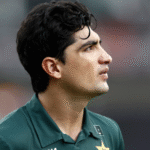Mercedes’ confirmation of Russell’s multi-year extension initially seemed straightforward. After all, the British driver has been part of their long-term vision since his junior days. But this agreement isn’t merely about keeping a seat warm. It’s about continuity through chaos — the chaos of Formula 1’s upcoming 2026 regulation overhaul.
The team is betting on stability as the key to regaining dominance. For Russell, the decision to stay isn’t about comfort; it’s about doubling down on a project he believes can finally take him to a championship. In an era when drivers are tempted by short-term opportunities, his choice reflects belief in Mercedes’ long-term engineering muscle.
“If every single seat was available for next year, and I could choose any single team to race for, I believe Mercedes is my best chance of winning the championship next year,”
he wasn’t just expressing loyalty — he was making a statement about timing, ambition, and risk. Beneath the surface of Mercedes’ recent announcement lies a story of trust, transition, and high-stakes strategy that could define both the driver’s and the team’s future in Formula 1.
The Quiet Emergence of a Lead Driver
One of the more subtle but significant aspects of this deal is the shift in Russell’s status within the team. With Lewis Hamilton’s departure to Ferrari, Russell is now clearly Mercedes’ de facto number one. That comes with both authority and accountability.
Team principal Toto Wolff has hinted that the new contract formally acknowledges this evolution — not with flashy declarations, but through internal expectations. Russell will now lead car development direction, set the performance benchmark, and act as the face of Mercedes’ post-Hamilton era. In short, he’s no longer just “the future” of the team; he’s the present.
The Power and Peril of Belief
Russell’s “best chance” comment carries a double edge. On one hand, it’s a show of faith — he believes Mercedes’ 2026 car, built under new power unit and aerodynamic rules, could return to title contention. On the other, it’s a gamble.
By committing now, Russell has effectively closed off potential moves to other rising forces such as Red Bull or McLaren, who might also nail the 2026 reset. If Mercedes misfire again, his prime years could be spent chasing rather than leading. The confidence is admirable; the risk, undeniable.
The Hidden Clauses and Quiet Flexibility
Reports suggest Russell’s new deal includes performance-linked clauses — essentially, if he hits certain targets, the contract extends automatically. That level of mutual flexibility reflects modern F1 reality: both sides want commitment without handcuffs. Mercedes protect themselves in case the 2026 car disappoints; Russell safeguards his options if the project stalls.

